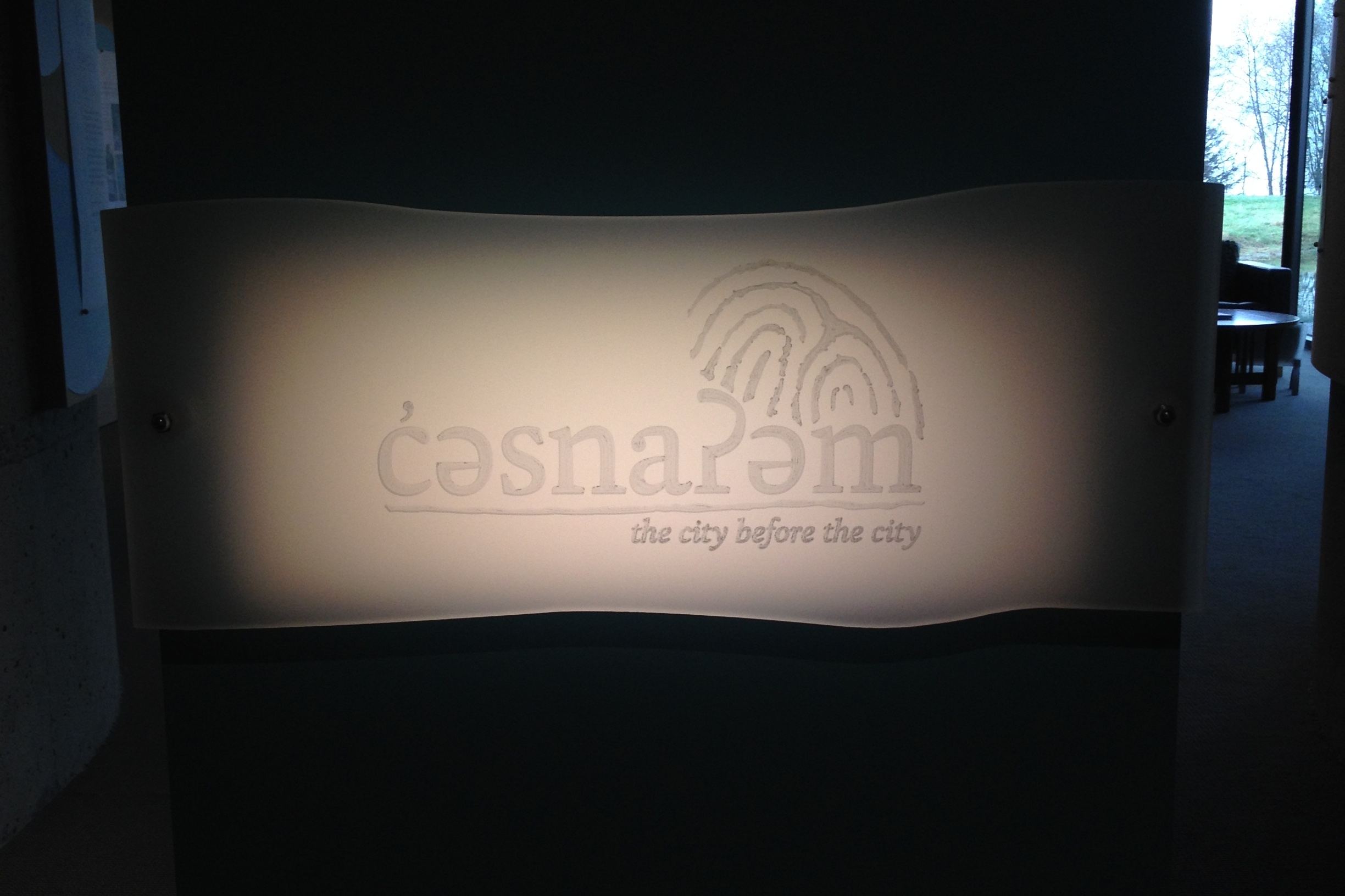Resilience and Re-Storying: A Review on the c̓əsnaʔəm Exhibit
ENGL 464K Writing Assignment #2 – for extra credit
Kay (Katherine) Ho – 65272130
This review is written from the first perspective because I believe it is important to speak from my positionality as a settler, and to engage with the exhibit from a personal, subjective experience.
Before entering the Musqueam c̓əsnaʔəm exhibit in the Museum of Anthropology, I take a deep breath. The last time I was here was for Claiming Spaces: Voices of Aboriginal Youth, an exhibit that showcased the creativity and artistic achievements of various Indigenous youth. I do not know what to expect today, but imagine I will leave this exhibit as I did the last: feeling challenged, inspired, and unsettled.
I first encounter a soundtrack of several people speaking in hən̓q̓əmin̓əm̓, the traditional language of the xʷməθkʷəy̓əm (Musqueam) nation, upon whose land I live and breathe as a settler. Already I am struck, for these words are unfamiliar to me. As I listen to the different tones and sounds of the language, I am reminded of how little I know about hən̓q̓əmin̓əm̓, and how infrequently I hear it, despite it being the language of this land. Language conveys nuance, stories, and histories, and I know the English translation to this soundtrack cannot fully convey its complexity. Nevertheless, these hən̓q̓əmin̓əm̓ words are a powerful reminder of the resistance and agency of Indigenous nations in the face of (ongoing) attempts to destroy their languages, cultures, and lives.
On the right, the light-grey walls are lined with various displays containing quotes, descriptions, and photos. On the left, large glass windows open out to sloping hills and ocean, and sunlight streams in with a steady warmth. The room is soft and bright. I scan the displays, and immediately a quote by Helen Callbreath stands out to me. It reads, “For years, most people never even knew where our reserve is, because it was never put on the maps” (c̓əsnaʔəm).
This quote is poignant, and speaks to the ways in which maps can convey, create, and simultaneously erase information. I think about how most maps of UBC campus, Vancouver, and Canada help to further Canada’s ongoing colonial project, for most of them have little or no acknowledgment of Indigenous presence on these lands. UBC’s official campus map, for example, does not address the Musqueam nation, despite the fact that the university exists on unceded – essentially, stolen – Musqueam land. Thankfully, the “Knowing The Land Beneath Our Feet” initiative contests these erasures by providing alternative narratives of Musqueam history. It is initiatives like Knowing the Land and c̓əsnaʔəm that unmap and re-story these colonial histories, resisting the ways in which Canada has constructed Indigenous nations as invisible, primitive, and in many cases, nonexistent.
Next, I enter a room that contains a table and five chairs. Overhead, another soundtrack plays; this time it is a conversation between elder Musqueam folks speaking in English. As they share their memories of growing up on Musqueam land, honour the connections they built with their community, and affirm the pride they feel as Indigenous people, I sit still, very still, and reflect on the everyday acts of Indigenous resistance around me, from the sacred fire on Burnaby Mountain to blockades in Unist’ot’en, Indigenous public art in the Downtown Eastside to blogs by Indigenous activists and knowledge-makers. In this space, as with all spaces on this land, I am a visitor, and so I take my time here, trying to soak in and honour the various knowledges and stories it contains.
References:
“c̓əsnaʔəm: the city before the city”. Musqueam Nation, Museum of Anthropology, Museum of Vancouver. Museum of Anthropology, 1 March 2015. Web. 13 March 2015. <http://www.thecitybeforethecity.com>.
